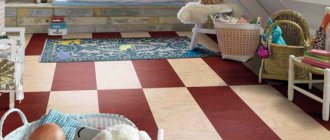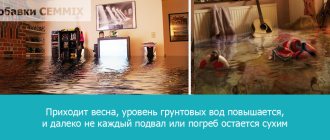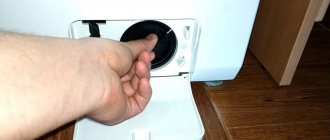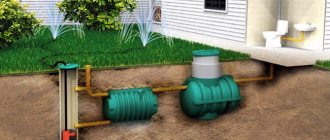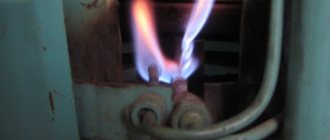Review of Seek Thermal Shot Pro
Diagnostics of construction defects in country houses, dachas and city apartments
Inspecting a country house, cottage or city apartment using a thermal imager for construction defects will more than pay for itself in the future, as it will save money on utility costs and also provide comfortable living conditions.
There are several reasons why people want to survey their home using a thermal imager:
- it’s cold in the house;
- suspiciously high heating costs;
- checking a house or apartment before purchasing;
- acceptance of a house or apartment after construction;
- acceptance of repair stages (insulation of walls, roofs, windows, etc.).
There is a common belief that thermal imagers can only be used to diagnose the quality of buildings, including country houses and dachas, in winter. For example, information is often found that to detect heat losses in a home, a temperature difference between the room and the outside air of about 15 ° C is required, which cannot be ensured in the summer.
In fact, this is far from the case.
Firstly, the home use of thermal imagers is not limited to diagnostics of heat loss (energy audit). There are a huge number of tasks that can be solved with the help of thermal imagers all year round, and not just in the cold season.
And, secondly, during an energy audit, it is not so much the temperature difference that is important, but the presence of the so-called heat flow, which can be provided by the pressure difference between the room and the street. After all, the temperature sensitivity of even household thermal imagers ranges from 0.5 to 2 °C, so why do all GOSTs write about energy audits with a difference of 15 °C? But first things first. Let's start with clearly “summer” tasks for a thermal imager. These tasks are no less, and sometimes even more important, than an energy audit.
Diagnosis of moisture in the home
In a country house, even due to a small leak in the roof, the rafters and ceiling can become saturated with moisture, which ultimately leads to their rotting. Detecting moisture and eliminating leaks in the roof is the first priority, otherwise your house will simply rot. In the case of a city apartment, the cause of humidity can be either flooding of neighbors above or the fact of living on the top floor. Moisture destroys thermal insulation, causes corrosion of metal structures, and causes the appearance of mold and mildew. Even a short stay in such a room can lead to irreparable loss of health. Fungus and mold are especially dangerous if there are children in the family. Under no circumstances should the solution to this problem be left until winter. As water evaporates, it absorbs heat from the wet material, creating the desired temperature contrast for detection by a thermal imager. A thermal imager is perhaps the only tool that can be used to easily detect wet areas in a home that are invisible to normal vision (Fig. 1). Having a thermal imager, you can inspect the entire room in a very short time.
Rice. 1. “Cool” colors on thermal maps show wet areas of the ceiling and wall.
Using a thermal imager it is also easy to detect defects in the roof itself (Fig. 2). Wet thermal insulation in leakage areas heats up in the sun during the day and is clearly visible on the thermal imaging image.
Rice. 2. Roof slope with a clearly visible leak.
Moisture can penetrate into rooms not only through the roof, but also through the basement or underground. In this case, as a rule, the floors are the first to rot, especially with a low foundation (Fig. 3, 4). And again, we note that the warm season is the best time to detect and eliminate waterproofing defects.
Rice. 3. Black color in the corner, shows wet area.
Rice. 4. Outside the room, damp areas, on the contrary, will look warm because they have been heated by the sun. In the thermal imaging picture, the foundation “sucks” water, which indicates poor waterproofing.
Diagnostics of "warm floor", heating and plumbing
The “warm floor” system, the general heating system, and the plumbing can also and even need to be inspected using a thermal imager in the warm season. It will be too late to do this in winter, because during the repair of these systems it will be impossible to use the home in winter (Fig. 5, 6, 7).
Rice. 5. Air lock in the heating battery on the thermal imager screen.
Rice. 6. Heating line of the “warm floor” system.
Rice. 7. Defect in the heating line in the “warm floor” system.
To detect leaks or the location of communications, you can always adjust the temperature of the coolant to the desired value so that the problem area is detected by a thermal imager.
Cold water leaks can be detected in the same way as a roof inspection. The thermal imager can easily distinguish the difference between wet and dry surfaces.
Checking the electrical wiring
Detection of electrical wiring faults also does not depend on the time of year (Fig. 8).
Rice. 8. The right switch gets too hot.
Diagnostics of air conditioning and ventilation systems
There are no problems at all with detecting defects in air conditioning systems with a thermal imager in the warm season, since the refrigerant is much colder than the surrounding air and its leak is very clearly visible on the screen of the thermal imager.
As for forced ventilation systems, the difference in air temperature inside and outside the system is not so great, but there is a pressure difference, which allows you to “see” defects in the system (Fig. 9). We will explain why this is possible below.
Rice. 9. Leak in vent pipe.
Energy audit of the building
Finally, we move on to the question that causes the most controversy: why is it believed that a high-quality thermal imaging inspection of a building is possible only if the temperature difference between the inside and outside of the room is at least 15 ° C, while a thermal imager distinguishes a temperature difference of already 0.5 -2 °C?
The point here is that with a small temperature difference, warmer air under conditions of natural convection leaves the room too slowly through insulation defects and its temperature manages to become equal to the street temperature. In order to use a thermal imager, it is necessary to create a sufficiently strong heat flux to record the temperature difference. To do this, excess pressure is created inside the room using a special device called an “Air Door”.
When the air from the room rushes out through all the cracks, its temperature does not have time to catch up with the street temperature and it becomes possible to record the difference using a thermal imager (Fig. 11, 12).
Rice. 11. The thermal imaging picture shows heat leaks through the windows and some parts of the façade.
Rice. 12. The thermogram shows an insulated apartment, clearly different in dark color from the rest in the apartment building.
Thus, diagnostics of all important engineering systems in a home and even an energy audit can be carried out in the summer.
What is a thermal imager and how does it work?
A thermal imager is a device that allows you to see differences in the temperature of objects on the screen.
Surrounding objects heat up differently and emit their own infrared radiation. You can see it using special cameras that are equipped with infrared sensors, so-called bolometric (thermal) matrices.
Infrared radiation, collected and focused on the sensor by the thermal imager lens, heats the matrix elements in accordance with the temperature distribution of the observed object.
In other words, the image obtained using such sensors is analyzed and displayed on the screen of the thermal imager in the form of a contrasting image with iridescent colors. Each shade means a certain temperature of the object.
For a long time, thermal imagers were fantastic gadgets “from Hollywood blockbusters”, inaccessible to the common man. The complex optics used and the corresponding prices from 100 thousand rubles transferred thermal imagers to the shelf with expensive “toys”.
The situation changed when thermal imagers for smartphones began to appear.
WE ARE READY TO CONNECT
The first thing you need to determine is which smartphones the SEEK thermal will be used with. For each version of the device, there is a version with a Lightning connector (for Apple mobile devices) and a version with a micro-USB connector for mobile devices based on Android OS.
So, we decided on the connector. You must download and install the free Seek Thermal app from the Apple Store or Google Play.
We will test the version for Android OS.
Which Android is Seek Thermal friendly with?
We took out from “grandmother’s chest” all the Android smartphones we found. We had as many as 5 of them. They are all slightly different from each other.
For Android OS version 4.0.4, it was not possible to install the program from Google Play: the program does not support working with such an “ancient” version of the OS. Starting from OS version 5.0, the program can already be installed without problems.
Physical connection to a mobile device based on Android OS also has some features. The micro-USB port is not symmetrical. This means that for the thermal scanner to be oriented correctly, the port must be oriented in a certain way.
On one of the tested phones, the micro-USB port turned out to be located “oppositely”. And the scanner aims its lens at the user.
On some mobile devices, the micro-USB port is located on the side rather than on the bottom. With this arrangement, it will be inconvenient to use the device because The image will be displayed rotated 90 degrees.
Some mobile devices use a USB Type-C port. This is a symmetrical connection port. It was not possible to connect the thermal scanner to this mobile device via an adapter - the device is not identified.
Checking freezing double-glazed windows
You can identify energy-efficient and poorly insulated areas of the house, or, for example, find a double-glazed window with a crack or a frame that requires sealing.
Savings in just one heating season can easily exceed the cost of a thermal imager.
How to choose a good thermal imager
A mobile thermal imager is a compact device that connects to a smartphone and, accordingly, transmits an image to its screen. Most of the calculations are performed by the smartphone processor, because it is not inferior in power to the processors of modern computers.
The trick is that such gadgets were initially produced in Chinese factories. The quality of such devices was appropriate - disgusting low-resolution displays and the lack of an adequate warranty.
Meanwhile, picture quality and reliability are the main parameters that you should pay attention to when purchasing. Nobody needs a thermal imager that sees only from 5 meters, shows a cloudy image and lasts for a month.
The appearance of Seek Thermal products on the market was a breath of fresh air.
The American company specializes in the production of compact, stand-alone “night vision devices” (with a display and battery) that do not require connection to a smartphone , as well as mobile thermal imagers.
There are several advantages here: Seek Thermal have high-resolution thermal matrices. These are the ones used in expensive industrial devices.
In theory, a thermal imager should show accurate body temperature, but this is not the case
To understand, cheap Chinese ones have a matrix resolution of only 60x60 pixels, while even the simplest version of the thermal imager from Seek Thermal has a matrix with a resolution of 206x156 pixels.
The devices of the American company have chalcogenide lenses that allow you to see radiation in the range from 7 to 13 microns at temperatures from -40 to 330 degrees (depending on the model).
Seek Thermal thermal imagers boast high-strength magnesium casings . There is no need to worry about the reliability of the devices.
Finally, Seek Thermal devices are assembled in sunny California (USA), and not somewhere in the obscure basements of Chinese factories.
In other words, the products meet the high requirements that can be placed on such gadgets.
We make sure that the lighting devices are working properly
Have you been changing light bulbs often lately? Using a thermal imager, you can easily see if they are overheating. This can lead not only to its failure, but also to more serious consequences.
Samsung Galaxy A52s
Sales start time: September 2021
Estimated price of Samsung Galaxy A52s: 6 + 128 GB – $559
Features: 120 Hz display, under-screen fingerprint scanner, 64 MP camera with OIS, 25 W fast charging, stereo speakers, IP67 water protection, NFC
Samsung Galaxy A52s is a significantly improved variant of the Galaxy A52. The smartphone was equipped with a 6.5-inch AMOLED display with Full HD+ resolution and a refresh rate of 120 Hz. The processor is a 6nm Qualcomm Snapdragon 778G with 5G support. The device is available in a single modification: with 6 GB of RAM and 128 GB of ROM. The main camera is represented by a 64 megapixel module with optical image stabilization. There is also an ultra-wide lens, a macro lens and a depth sensor. The resolution of the selfie module is 32 megapixels. The 4500 mAh battery supports 25-watt fast charging. The device body is protected from water and dust according to the IP67 standard. The new product received a mini-jack and stereo speakers with Dolby Atmos surround sound.
Keeping the house warm
A thermal imager can (and should!) be used to determine heat leaks in interpanel seams, walls and windows. In other words, the device will “check” suspiciously high heating costs. Especially if you live in a cottage.
Problems with radiators and heating pipes
How are your batteries at home, is there a lot of air inside? They should be evenly colored in the image from a thermal imager. Which, naturally, will not happen in most of our homes. Now you can easily identify a clogged section or clogged valve.
Just do not confuse the welding points in the battery with places of heat loss.
Works directly from your smartphone: Compact Pro
On the Russian market today you can find three models of Seek Thermal mobile thermal imagers – Compact, CompactXR and Compact Pro. Each of them is sold in several versions: with a Lightning, microUSB or USB-C port for Android.
In other words, either for iPhones or Android smartphones.
Visually, it seems that all models are the same. They have a small magnesium body, similar in size and shape. The only difference is the color of the lens.
Almost like Canon lenses. Anyone interested in the field of photographic equipment knows that the red ring on the lens means the L series, that is, more expensive and high-quality optics. The situation is similar here. If the simplest Compact model has black plastic around the lens glass, then in the expensive Compact Pro model it is burgundy .
The basic Compact version has a matrix resolution of 206x156 (32,000 pixels), a shooting frequency of 9 frames per second, a viewing angle of 36 degrees and a viewing range of 300 meters.
The more advanced CompactXR model has a matrix resolution of 206x156 (32,000 pixels) and the same shooting frequency of 9 frames per second. The viewing angle is the same 36 degrees, but the thermal imager “sees” up to 550 meters.
Finally, the top-end Compact Pro has a matrix with a resolution of 320x240 (76800 pixels), takes 9 frames per second , has a viewing angle of 32 degrees and is capable of “looking ahead” at a distance of up to 550 meters.
As for the heat-sensitive matrix, it is the same for all models and is capable of detecting objects in the temperature range from -40 to +330 degrees.


